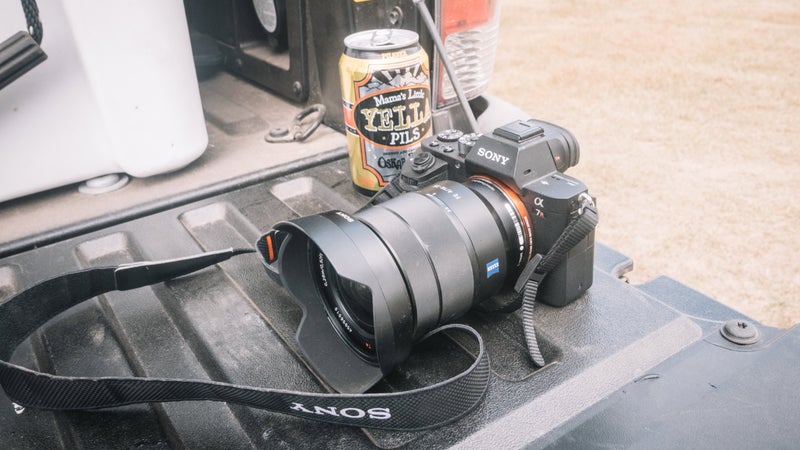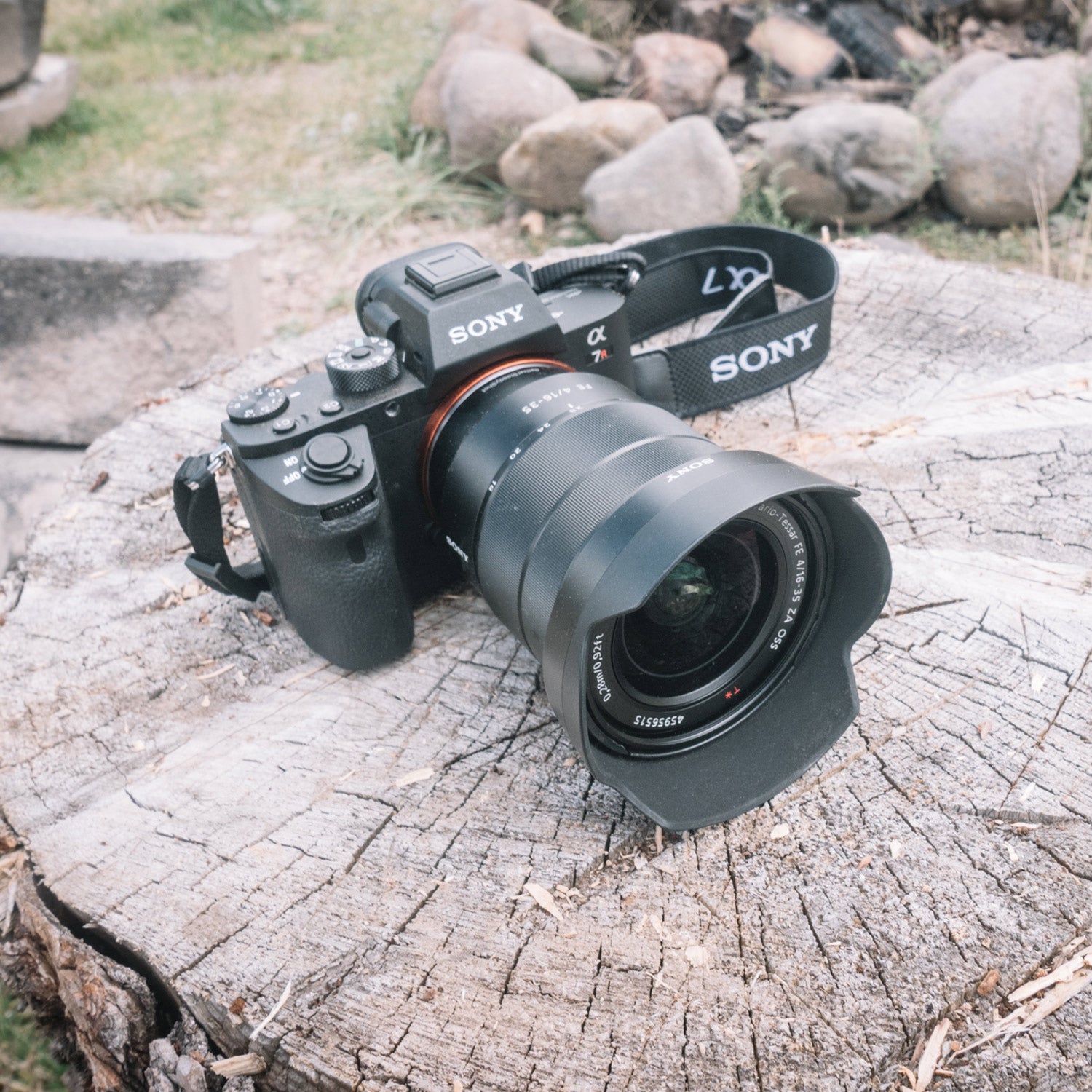Mirrorless cameras have been nipping at the heels of DSLRs for years now, but they hadn’t��surpassed them because of their limited functionality. Something was always wrong: Maybe the focus was too slow, or maybe the mirrorless options struggled in low light. That all changed with the $3,199��.��This camera doesn’t just��match��some top-shelf DSLRs—it actually bests them.��
The Takeaway
The Good:��This is the first��mirrorless��camera that truly challenges, and in some ways overtakes, the powerhouse��DSLRs��that pro outdoor shooters have relied on for years. You get the functionality of a camera like the Canon 5D Mark III��packed into a significantly smaller body.
The Bad:��The lens selection for the Sony a7R��II is good��but not quite as varied as what Canon or Nikon offers. Also, it’s going to take��DSLR��shooters a little while to get used to the ergonomics of this smaller camera. Some people might find it harder to work with just one hand.
The Verdict:��This full-frame camera is a game��changer for outdoor photographers because it enables them to shoot magazine-quality images or documentary-quality video without the former bulky pro setup. We’ve already seen some shooters ditch their��DSLR��gear, and we suspect more will follow.��
Specs
- �ʰ�������:��$3,199
- �±����:��582 grams
- �ѱ��辱������:��42.4
- ISO Range:��50–102,400
Image Quality
The centerpiece of the a7R��II is a 42.4-megapixel backside-illuminated full-frame sensor. Translation: You get a camera with loads of megapixels (you could easily shoot a magazine assignment or billboard with this thing) that also performs exceptionally well in low light. (The backside illumination technology allows more light to hit each pixel). Normally one of those features is better than the other, but the a7R��II nails both.
In addition to all that resolution, the a7R��II also features a five-axis image stabilization system to help users take crisp video and nonblurry photos in super-low light. There’s also the gigantic 50 to 102,400��ISO range for those conditions.��

Functionality
You can silence the shutter of the a7R II—ideal for travel and wildlife photographers—and it’s rated to 500,000 lifetime actuations, or clicks, which means it won’t fail even if you use the camera every day for years. Photographers who shoot sports need a whippy-fast, robust autofocus system, and the a7R��II delivers with 399 autofocus points that help ensure peak-action shots are always in focus.
It shoots only five frames per second, which might be too slow for some ski photographers who prefer cameras like the 12-frames-per-second Canon 1D-X. But that’s still plenty fast for most outdoor sports.��
Video
The a7R��II separates itself from the other cameras in Sony’s a7 line by offering built-in 4K recording abilities (previous models required an additional recorder). With that capability, plus an impressive dynamic range, a highly gradable s-log2 video format, and stellar performance in low light, the a7R��II is a video powerhouse.
Many shooters will use this as their principal rig. Larger productions will likely use it as a second camera or even strap it to a drone. Don’t be surprised when ski movies five years from now are shot entirely with this camera.
Ergonomics
Photographers who’ve used DSLRs for years might not like the ergonomics of the a7R��II at first. I found it doesn’t fit into one hand quite as nicely as the Nikon D800��or a Canon 5D, and it doesn’t feel quite as meaty and steady as a DSLR when you’re holding the camera with one hand and focusing with the other.
The buttons and dials are set up differently from any Nikon or Canon I’ve ever used, so they took some adjustment. But after just a week of playing around, I got used to the new configuration.��

Weight and Size
The a7R��II body weighs 582 grams. For comparison, the weighs 860 grams. That extra weight makes a big difference over the course of a long ride or route. That weight savings also makes a difference when you’re holding up the camera for an extended period of time.��
Inside a bag, the a7R��II and its lenses take up significantly less room. You can easily pack two bodies and four or five lenses into something��like the . With a DSLR, you might fit two bodies��and two lenses.
The Competition
There are cameras on the market��with better specs than this Sony. The has a��higher resolution, and Sony’s mirrorless is just as good, if not��better,��in low light. But no other camera��has as many top-level features packed into one relatively small��body. I��suspect DSLR manufacturers like Canon and Nikon, as well as other mirrorless manufacturers like Fuji and Olympus, are currently figuring out how they can build their own��cameras with similar specs.


